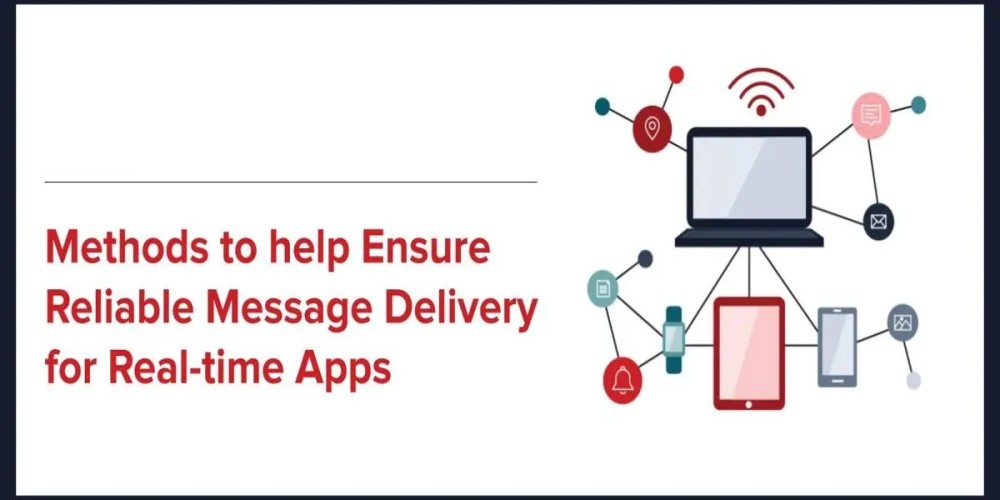Guaranteeing messages are conveyed immediately and precisely progressively applications is pivotal in upgrading client experience and building entrust with your clients. Notwithstanding, accomplishing this dependability can challenge, as a significant number of the issues that accompany ensuring message conveyance are regularly past the control of continuous informing frameworks.
Keep perusing to look into a portion of these difficulties and a portion of the techniques to assist with guaranteeing dependable message conveyance for your continuous application.
Challenges in Ensuring Message Conveyance
Dependably conveying messages progressively applications can be blocked by a few difficulties, no matter what the stage’s foundation and usefulness:
Network Shakiness and Idleness:
Vacillations in network quality can create critical setbacks or even total loss of messages as they are conveyed. Network clog, bundle misfortune, and variable inactivity can upset this stream, and high inertness can make messages show up mixed up, making bottlenecks.
Gadget Availability Issues:
Gadgets associated with the web by means of Wi-Fi or particularly through portable organizations can be inclined to network issues. Portable clients could have unfortunate sign strength as they move, and gadgets can be startlingly closed down because of battery duration or abrupt application conclusion.
Server-Side Limits and Wasteful Design:
Servers could encounter over-burdens during top use times, prompting execution debasement, particularly in the event that the server isn’t as expected architectured to deal with the ongoing information. Assuming there are no components set up to retry and recover these bombed messages, messages can be lost and not conveyed continuously.
Outer Elements:
A scope of outside variables can influence message conveyance, frequently past the control of both the ongoing stage and its clients. Blackouts can take out server farms, and issues with network access suppliers (ISPs) can make critical disturbances guarantee that the messages are conveyed.
Strategies to Guarantee Solid Message Conveyance
Albeit a portion of these difficulties are all the way out of the control of the constant supplier and its clients, there are strategies that you can use to assist with further developing this message conveyance and guarantee volumes of messages are conveyed.
Add a Grouping Field to Messages
A grouping field guarantees the distributer (shipper) sends messages more slow than the supporter (beneficiary) can get them. It likewise takes into account usefulness to assist with reordering messages on the client side assuming they show up mixed up, staying away from overt repetitiveness.
PubNub’s low inactivity stage handles this work process with its Arranged Message Lines, where each message has an exceptional chronic identifier, ensuring message request. While clients can characterize their request succession number, we offer a programmed identifier that ensures request (utilizing a timetoken as a sequential message ID that is utilized as line pointers) guaranteeing start to finish message requesting. As arrangements scale, so will the quantity of message lines, yet PubNub’s Steering Cross section guarantees buy in Programming interface calls will constantly be coordinated to the right backend compartment; this implies we can ensure that the right message line is prepared in memory for the buying in client, supporting execution and guaranteeing high accessibility.
Packaging Messages
Packaging messages can streamline conveyance dependability by lessening the quantity of transmissions and limiting the opportunity of message misfortune. Consolidating different messages into a solitary packaged message before transmission the above related with sending various individual messages is decreased.
PubNub’s informing abilities support message packaging, permitting designers to bunch Directives for effective conveyance and better throughput. Furthermore, PubNub packs exchanges together, diminishing expenses by compacting and packaging Programming interface demands without influencing execution. By joining different Messages into a solitary exchange, tremendous expense decreases can be accomplished, particularly while managing little Messages.
Building Decisions
Message conglomeration and sharding can altogether lessen the gamble of message misfortune because of server over-burdens. Conglomerating messages decreases the quantity of individual message transmissions while sharding circulates the message load across numerous channels or servers. By joining numerous little messages into a solitary message before transmission and disseminating messages in light of models like client ID or geological area, the informing framework can deal with load adjusting all the more proficiently, considering more legitimate versatility.
Make certain to investigate our message collection and sharding documentation for more data, as well as our design proposals to assist with further developing message conveyance.
Auto-Reconnect Frameworks
At the point when a message neglects to convey, it very well may be lined for retransmission after a brief pause. This guarantees that impermanent issues, like organization blackouts, don’t bring about long-lasting message misfortune. Carrying out auto-reconnect rationale in the client application permits it to identify separations and naturally endeavor to reconnect, mentioning missed messages from the server upon reconnection.
PubNub’s informing stage upholds this retry rationale, permitting designers to arrange the quantity of retry endeavors and the deferral between them, by recovering the lost Messages from capacity at whatever point important (by means of message maintenance).
Coordinated versus Nonconcurrent Distributing
While nonconcurrent distributing can further develop execution by permitting different messages to be sent at the same time, simultaneous distributing guarantees that each message is recognized prior to sending the following one, decreasing the gamble of message misfortune. While a lot more slow in presentation, simultaneous distributing includes communicating something specific and sitting tight for an affirmation from the client prior to sending the following, guaranteeing that messages are conveyed and recognized each in turn.



